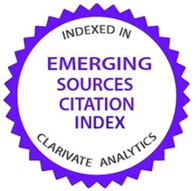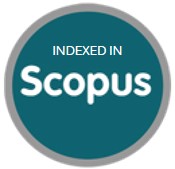La estrategia de expansionismo hegemónico iraní en Siria y Afganistán
DOI:
https://doi.org/10.21830/19006586.639Palabras clave:
Asia central, conflicto internacional, estrategia militar, Irán, Medio OrienteResumen
En las últimas décadas, Irán ha puesto en marcha un ambicioso programa de política exterior en el cual uno de sus objetivos fundamentales es promover su expansionismo hegemónico a lo largo de zonas de especial interés regional. Este artículo investiga la agenda desarrollada por Irán en Afganistán y Siria, en medio de dos guerras y contextos territoriales diferentes. A pesar de las diferencias, este trabajo evidencia los elementos comunes de su estrategia expansionista en Asia central y Medio Oriente. Esta estrategia se basa en el rechazo de la intervención de EE. UU. y sus aliados, y la reivindicación de un régimen político-religioso islámico. En los casos analizados, Irán ha mezclado el apoyo político y militar con la ayuda económica y el fortalecimiento de lazos comerciales con estos países.
Descargas
Referencias bibliográficas
Agarwal, R. (2014). Post Afghanistan 2014. Options for India and Iran. Institute of Peace and Conflict Studies, 247, 1-8.
Al-Jazeera English. (2016). Why is Iran backing Syria’s Bashar al-Assad [video]. Youtube. https://youtu.be/HN9--eJEfmE
Akbarzadeh, S. (2018). Prospects for Iran and Afghan relations. En S. Bose, N. Motwani, & W. Maley (eds.), Afghanistan. Challenges and prospects. Routledge.
Alfoneh, A. (2011). Mixed response in Iran. Middle Eastern Upheavals. Middle East Quarterly, 18(3), 35-39. https://www.meforum.org/3006/mixed-response-in-iran
Aydin, C. (2015). El antioccidentalismo como síntoma del fracaso en crear un orden global justo. Anuario Internacional CIDOB, 38-45. https://bit.ly/2FteuqA
Banco Mundial. (2017, 10 de julio). The toll of war: The economic and social consequences of the conflict in Syria. https://bit.ly/2Fo1ymd
Beeman, W. (2005). The sins of Iran. En The “Great Satan” vs. the “Mad Mullahs”: How the United States and Iran demonize each other (pp. 137-163). Preager Publisher.
Bureau of Counterterrorism. (s. f.). Foreign Terrorist Organizations. U. S. Department of State. Consultado en septiembre de 2020. https://www.state.gov/foreign-terrorist-organizations/
Byman, D. (2015). State sponsor of terror: The global threat of Iran. House Committee on Foreign Affairs; Subcommittee on Terrorism, Nonproliferation, and Trade.
Christensen, J. (2011). Strained alliances. Iran’s troubled relations to Afghanistan and Pakistan [DIIS Report 2011:03]. Danish Institute for International Relations. https://www.econstor.eu/bits-tream/10419/59867/1/656976020.pdf
Clawson, P. (1993). Iran’s challenge to the West: How, when, and why? The Washington Institute for Near East Policy.
Colmenares, L. (2011). Las relaciones entre Irán y Venezuela: implicaciones para el Gobierno venezolano [Policy Paper 35]. Programa de Cooperación en Seguridad Regional, Friedrich Ebert Stiftung. https://library.fes.de/pdf-files/bueros/la-seguridad/08265.pdf
Cordesman, A., & Hwang, G. (2020). The state of the war before —and after— the peace agreement. Center for Strategic and International Studies.
Daragahi, B. (2018, 1.º de junio). Iran wants to stay in Syria forever. Foreign Policy. https://bit.ly/2GWdL1W
Fürtig, H. (2014). Iran: Winner or loser of the “Arab Spring”? En Regional powers in the Middle East. new cons¬tellations after the Arab revolts. (pp. 23-41). Palmgrave Macmillan.
Haji-Yousefi, A. (2012). Iran’s foreign policy in Afghanistan: The current situation and future prospects. South Asian Studies (1026-678X), 27(1).
Hansen, C. (2019, diciembre). Iran’s foreign policy towards Afghanistan [Policy Brief ]. Royal Danish Defence College. https://bit.ly/3bWozsq
Heradstveit, D., & Bonham, M. (2007). What the axis of evil metaphor did to Iran. Middle East Journal, 61(3), 421-440. https://bit.ly/3kanxMa
Hodali, D. (2018, 8 de septiembre). Rebuilding Assad’s Syria: Who should foot the bill? Deutsche Welle. https://bit.ly/2DSV9P4
Imran, S. (2019). Sino-US involvement in Afghanistan: Implications for South Asian stability and security. Strategic Studies, 39(3), 53-72. https://www.jstor.org/stable/48544310
Katzman, K. (2020). Iran’s foreign and defense policies. Congressional Research Service.
Khan, M., & Itani, F. (2013). The economic collapse of Syria. Atlantic Council.
Kagan, F., Majdyar, A., Pletka, D., & Sullivan, M. (2012). Iranian influence in the Levant, Egypt, Iraq, and Afghanistan. American Enterprise Institute.
Koepke, B. (2013). Iran’s policy on Afganistan. The evolution of strategic pragmatism. Stockholm International Peace Research Institute.
Larson, E., & Savych, B. (2007). Operation enduring freedom (Afghanistan, 2001-). En Misfortunes of war: Press and public reactions to civilian deaths in wartime (pp. 125-158). RAND Corporation.
Marshall, T. (2017). Prisioneros de la geografía. Todo lo que hay que saber sobre política global a partir de diez mapas. Península.
Milani, M. (2006). Iran’s policy towards Afghanistan. Middle East Journal, 60(2), 235-256. https://scholarcom-mons.usf.edu/gia_facpub/106
Mohseni, P., & Ahmadian, H. (2018, 10 de mayo). What Iran really wants in Syria. Foreign Policy. https://bit. ly/2FsPFez
Moya, S. (2014). Entre las grandes expectativas y la demonización: las relaciones entre Irán y América Latina, 2005-2013. Revista Perspectivas Internacionales, 10(2), 15-36. https://bit.ly/32peC3B
Nader, A., Scotten, A., Rahmani, A., Stewart, R., & Mahnad, L. (2014). Iran and Afghanistan: A complicated relationship. En Iran’s influence in Afghanistan. RAND Corporation.
Omidi, A. (2013). Iran’s narrative of security in Afghanistan and the feasibility of Iranian–US engagement. Stockholm International Peace Research Institute.
Paraskova, T. (2018, 2 de octubre). Iran to build power plant in Syria. Oil Price. https://bit.ly/3bQSt0W
Revilla, M., & Hovanyi, R. (2013). La “primavera árabe” y las revoluciones en Oriente Medio y Norte de África: episodios, acontecimientos y dinámicas [ponencia]. XI Congreso Español de Sociología: Movimientos Sociales, Acción Colectiva y Cambio Social, Madrid, España.
Russia Today. (2015, 10 de abril). 9 mapas que explican lo que está pasando en Oriente Medio. Actualidad RT. https://bit.ly/2RnfI9q
Sariolghalam, M. (2016). La posición geopolítica de Irán en Oriente Medio. Anuario Internacional CIDOB, 209-215. https://bit.ly/3kciw5H
Tellis, A., & Eggers, J. (2017, 22 de mayo). U. S. policy in Afghanistan: Changing strategies, preserving gains [paper]. Carnegie Endowment for International Peace. https://bit.ly/2ZzlhWT
Toscano, R. (2012, enero). Iran’s role in Afghanistan [paper]. CIDOB Policy Research Papers. https://bit.ly/ 35v9RHr
Vatanka, A. (2017). Iran’s bottom line in Afghanistan [issue brief]. Brent Scowcroft Center on International Security. https://bit.ly/2Rinj9v
Zarif, M., & Majidyar, A. (2009, agosto). Iranian influence in Afghanistan: Recent developments. Critical Threats. https://bit.ly/32njlT6
Descargas
Publicado
Cómo citar
Número
Sección
| Estadísticas de artículo | |
|---|---|
| Vistas de resúmenes | |
| Vistas de PDF | |
| Descargas de PDF | |
| Vistas de HTML | |
| Otras vistas | |

























